Anesketin/ Nimatek Injection
Anesketin / Nimatek injection contains ketamine hydrochloride. Ketamine is a dissociative anaesthetic agent. It is mainly used in dogs, cats and horses. This product information contains indication, dosage, side effects and combination with other agents like butorphanol, detomidine, thiopental sodium, romifidine, medetomidine and xylazine.
Description
Anesketin/ Nimatek Injection
Ketamine Hydrochloride 100 mg/ ml
Ketamine hydrochloride for dogs, cats, horses
Brand Names: Anesketin, Nimatek
Manufactured/ Mktd by: Dechra Pharmaceuticals PLC
Dosage Form: Liquid for injection
Clear, colourless liquid that shows no signs of contamination
Presentation / Packing:
5 ml, 10 ml, 20 ml, 25 ml, 30 ml and 50 ml.
Clear, colourless type I glass vials with aluminium lids and bromobutyl rubber stoppers
1 vial in a cardboard box
Not all pack sizes may be marketed
Ingredients & Composition:
Each 1 ml contains:
Active substance:
Ketamine 100 mg
(corresponding to ketamine hydrochloride 115.4 mg)
Excipient:
Chlorocresol 1 mg
Sodium hydroxide (for pH adjustment)
Hydrochloric acid (for pH adjustment)
Water for injections.
Class: Dissociative Anesthetic
Description / MOA:
Anesketin / Nimatek injection contains ketamine hydrochloride. Ketamine is a dissociative anaesthetic agent.
Ketamine causes catalepsy, amnesia, and analgesia, while maintaining muscular tone and pharyngeal and laryngeal reflexes. Respiratory depression is not a noticeable feature. There is an increase in cardiac output, blood pressure, and heart rate. All these characteristics may be modified if the product is used in combination with other agents.
Pharmacokinetic particulars
In dogs, horses, and primates, ketamine is biotransformed extensively in the liver. In cats some hepatic metabolism takes place, but normally the majority of the drug is eliminated via the kidney. After an intravenous bolus, ketamine is quickly redistributed from the CNS to other tissues, primarily the liver, kidney, lung, and fat.
Indications for use:
To be used as a sole agent in cats for
a) restraint and minor surgical procedures (where muscle relaxation is not required).
To be used to induce anaesthesia in combination with:
a) with butorphanol and medetomidine in the dog and cat,
b) with xylazine in the horse, dog and cat,
c) with detomidine in the horse,
d) with romifidine in the horse.
Target species:
Dog, cat and horse
Dosage & Route:
For intravenous, subcutaneous, or intramuscular administration.
For combination use:
Ensure adequate sedation of the animals before ketamine administration. It should be noted that doses and administration methods differ greatly depending on the species. Additionally, there may be significant inter-individual variations in ketamine’s effects, thus it is advised to adjust the dosage according to the individual.
DOG:
Because it increases muscular tone and results in uncoordinated muscle contractions, ketamine cannot be administered as a mono-anaesthetic in dogs.
Xylazine/ketamine:
By intramuscular route, administer xylazine at a dosage rate of 1 mg/kg (equivalent to 0.5 ml/10 kg body weight of xylazine 2% solution). Immediately administer ketamine at a dose rate of 15 mg/kg body weight by I/M route (corresponds 1.5 ml/10 kg body weight of Anesketin).
Dogs lose their pedal reflex in around 7 minutes and become recumbent in about 3 minutes. After the ketamine injection is administered, the anaesthesia lasts around 24 minutes, with the pedal reflex returning after 30 minutes.
Medetomidine/ketamine:
Depending on the length of anaesthesia required, give ketamine at a dosage rate of 5.0-7.5 mg/kg (corresponding to 0.5-0.75 ml/10 kg body weight) and medetomidine at a dose rate of 40 μg/kg (corresponding to 0.40 ml/10 kg body weight of medetomidine 1 mg/ml solution).
The loss of the pedal reflex takes place around 11 minutes after the injection of 5 mg of ketamine/kg and 7 minutes after the administration of 7.5 mg of ketamine/kilogram. Anaesthesia lasts for around 30 and 50 minutes, respectively.
Atipamezole should NOT be used to reverse this combination in a dog.
Butorphanol/medetomidine/ketamine:
By intramuscular injection, give butorphanol at 0.1 mg/kg and medetomidine at 25 μg/kg.
Dogs lose their pedal reflex in around 14 minutes and become recumbent in about 6 minutes.
15 minutes after the initial injection, a second intramuscular injection of ketamine at a dosage rate of 5 mg/kg (equivalent to 0.5 ml/10 kg body weight) should be given.
After 53 minutes of the 100 mg/ml ketamine injection, the pedal reflex is restored. Sternal recumbency is achieved in around 35 minutes, and standing will take another 36 minutes.
Atipamezole should NOT be used to reverse this combination in a dog.
CAT:
Ketamine as a sole agent:
Ketamine can be used as a single anaesthetic, although combination anaesthesia is advised to prevent undesirable psychomotor effects. Ketamine can be administered intravenously or subcutaneously, although intramuscular injection is the preferred method. Depending on the level of immobilisation or surgical interference intended, the dosage ranges from 11 to 33 mg/kg of ketamine. According to the patient’s physical state, the use of sedatives and premedicants, and other factors, the following doses may need to be changed.
Dose (mg/kg) | Clinical procedures |
11 (0.11 ml/kg) 22-33 (0.22-0.33 ml/kg) | Minor restraint Minor surgery and restraint of fractious cats |
Ketamine anaesthesia lasts for 20–40 minutes, and recovery takes take place over the course of 1–4 hours.
Ketamine should be used in combination with other sedatives or anaesthetics for major surgery. Depending on the formulation and mode of administration, the dosage ranges from 1.25 to 22 mg/kg (0.06 to 1.1 ml/5 kg).
Although vomiting is unlikely to happen when ketamine is administered alone, but still cats should ideally be fasted for a few hours before anaesthesia if possible.
Ketamine supplementary combinations in the cat:
To minimise salivation, atropine premedication at 0.05 mg/kg is usually advised. Additionally, acepromazine (0.2% solution) can be injected intramuscularly as a premedicant at a dosage rate of 0.11 mg/kg, or 0.28 ml per kilogramme of body weight. It is possible to intubate the trachea while under ketamine anaesthesia. By using the suitable combinations and right proportions of methoxyflurane, halothane, nitrous oxide, and oxygen, inhalation anaesthesia may be maintained.
Xylazine/ketamine:
By intramuscular injection, administer xylazine at a dosage rate of 1.1 mg/kg (equivalent to 0.28 ml/5 kg body weight of xylazine 2% solution) and atropine at a dose rate of 0.03 mg/kg (equivalent to 0.25 ml/5 kg body weight of atropine 0.06% solution). Wait 20 minutes before injecting ketamine intramuscularly at a dosing rate of 22 mg/kg (equivalent to 1.1 ml/5 kg body weight).
Vomiting may occur up to 20 minutes after giving Xylazine. After administering ketamine intramuscularly, anaesthetic effect takes between three and six minutes to begin.
In comparison to acepromazine/ketamine combos, xylazine/ketamine combinations result in a deeper anaesthesia with more prominent respiratory and cardiac effects and a longer recovery time.
Medetomidine/ketamine:
Intramuscular:
Give medetomidine by intramuscular injection at a dosage rate of 80 μg/kg. Following this, ketamine should be injected intramuscularly at a dosage rate of 2.5-7.5 mg/kg (equivalent to 0.12-0.38 ml/5 kg body weight).
Onset of anaesthesia is 3-4 minutes. The amount of ketamine used determines how long surgical anaesthetic lasts; it might last anywhere from 30 to 60 minutes. If necessary, halothane and oxygen with or without nitrous oxide might be used to extend anaesthesia.
Intravenous:
Ketamine and medetomidine can be injected intravenously at the following dosage rates: 40 μg of medetomidine and 1.25 mg of ketamine per kg body weight.
After administering ketamine and medetomidine intravenously to cats, clinical experience has shown that when the need for anaesthesia has passed, administering 100 μg of atipamezole per kilogramme intramuscularly causes recovery to sternal recumbency in about 10 minutes and to standing in about 14 minutes.
When using a medetomidine/ketamine combo, atropine is typically not required.
To achieve precise dosage, it is advised to use either insulin syringes or 1 ml graded syringes.
Butorphanol/medetomidine/ketamine:
Intramuscular:
Administer butorphanol at a dose rate of 0.4 mg/kg, medetomidine at a dose rate of 80 μg/kg and ketamine at a dose rate of 5 mg/kg (corresponding to 0.25 ml/5 kg body weight) by intramuscular injection.
Cats become recumbent in 2-3 minutes following injection. Loss of pedal reflex occurs 3 minutes post injection. At 45 minutes post induction, reversal with 200 μg atipamezole/kg results in return of pedal reflex 2 minutes later, sternal recumbency 6 minutes later and standing 31 minutes later.
Intravenous:
By intravenous injection, provide butorphanol at a dosage rate of 0.1 mg/kg, medetomidine at a dose rate of 40 μg/kg, and ketamine at a dose rate of 1.25–2.5 mg/kg (equivalent to 0.06-0.13 ml/5 kg body weight), depending on the level of anaesthesia required.
Clinical experience has demonstrated that reversal, at any point, with 100 μg of atipamezole/kg causes the pedal reflex to return after 4 minutes, sternal recumbency after 7 minutes, and standing after 18 minutes..
HORSE:
For the production of short term anaesthesia suitable for minor surgical interferences or for induction prior to inhalation anaesthesia. When romifidine or detomidine are used as the premedicant, anaesthesia may also be maintained with a ‘top-up’ combination of either romifidine and ketamine 100 mg/ml or detomidine and ketamine at regular 8-10 minute intervals. Never use ketamine as a sole anaesthetic medication.
When feasible, starving/ fasting animals for a while before anaesthesia is considered excellent anaesthetic practice.
Horses should not be stressed before to the anaesthesia in order to have the optimum outcomes. Equally crucial is that the whole procedure—from induction to recovery—take place in peaceful, calm/serene surroundings.
The use of 0.03 mg/kg acepromazine 45 minutes before administering either detomidine or romifidine to agitated horses makes it easier to handle and put an intravenous catheter.
Ketamine should not be given and the anaesthetic treatment should be stopped if the horse does not become sedated after receiving injections of either xylazine, detomidine, or romifidine. Before attempting again the next day, the situation should be evaluated to see why the horse did not respond, and then the environment and/or the medications should be modified as appropriate.
The use of an intravenous catheter is strongly recommended when performing a total intravenous procedure for the safe and efficient administration of a top-up regimen.
It has been observed that using 10 ml of lidocaine split between the testicles during castration prevents any potential reaction to ligating the testicular cord and reduces the number of top-ups needed.
Xylazine/ketamine:
A slow intravenous injection should be given to provide xylazine at a dosage rate of 1.1 mg/kg, which is equivalent to 1.1 ml of 10% xylazine solution per 100 kg of body weight. The horse should appear sedated within 2 minutes post injection. Injection of ketamine should be administered at this stage. It is advised to administer the ketamine injection no later than five minutes after giving xylazine. The recommended dosage for ketamine is 2.2 mg/kg, or 2.2 ml per 100 kg of body weight, given as an intravenous bolus.
Induction and recumbency take some 1-2 minutes. In the first few minutes, muscle jerks is possible, although it normally disappears quickly.
The average length of anaesthesia is about 20 minutes but it may vary and can last between 10 and 30 minutes. Horses invariably stand 25-45 minutes after induction. Recovery usually takes place quietly but can can happen suddenly. Therefore, it’s important to just attempt short-term interferences or make plans to keep patients under anaesthesia longer. Intubation and inhalation anaesthesia maintenance can be employed for prolonged periods of anaesthesia.
Detomidine/ketamine:
At dose rate of 20 μg/kg of detomidine should be injected intravenously. The horse should get sedated within 5 minutes after injection. At this point, ketamine should be given intravenously as a bolus at a dosage rate of 2.2 mg/kg, or 2.2 ml per 100 kg of body weight.
The effects of anaesthetic begin gradually, and most horses take about a minute to become recumbent. Recumbency in large, healthy horses might take up to three minutes. The horse should be left alone for the next one to two minutes as the anaesthesia deepens. Horses regain sternal recumbency about 20 minutes after receiving a ketamine injection, providing them a 10-15 minute surgical anaesthesia.
Maintenance of surgical anaesthesia:
If it becomes essential to keep a patient under anaesthesia longer, one of the following approaches may be employed.:
a) Thiopental sodium
Thiopental sodium can be given intravenously in boluses of 1 mg/kg as per need. There have been five dosages of 1 mg/kg each, for a total of 5 mg/kg. Greater cumulative doses than this may result in a lower-quality recovery. If a sufficient level of anaesthesia is not attained, thiopental sodium can also be given in increments. The horse may show signs of ataxia if encouraged to stand prematurely and so should be left to stand in its own time.
b) Detomidine/ketamine
Administer half of the initial premedication dose i.e. 10 μg detomidine/kg, followed immediately by half of the initial induction dose of ketamine i.e. 1.1 mg ketamine/kg, both the drugs by intravenous route. This will add another 10 minutes of surgical anaesthesia approximately, which can be used as per need up to five times at regular intervals of 10 minutes without compromising recovery.
Romifidine/ketamine:
Romifidine should be given by intravenous route at a dose rate of 100 μg/kg. The horse should get sedated by 5-10 minutes after injection. At this point, ketamine should be given intravenously as a bolus at a dosage rate of 2.2 mg/kg, or 2.2 ml per 100 kg of body weight. Sedation should be apparent before the induction of anaesthesia.
Maintenance of surgical anaesthesia:
If it becomes necessary to prolong anaesthesia, one of the following regimes can be used:
a) Thiopental sodium
If animal show signs of recovery or consciousness Thiopental sodium can be given by intravenous route in boluses @ 2.5 mg/kg. A maximum of three times are acceptable following induction. Greater cumulative dosages may result in a lower-quality recovery. The horse should be allowed to stand on its own since forcing it to stand up too soon might cause ataxia.
b) Romifidine/ketamine
Depending on depth and duration of anaesthesia required, administer romifidine intravenously within the dose range of 25-50 μg/kg body weight, i.e. ¼-½ the initial premedication dose followed immediately by ketamine intravenously at a dose rate of 1.1 mg/kg body weight, i.e. ½ the initial induction dose). Each top-up lasts around 8 to 10 minutes and may be repeated up to five times without compromising recovery at regular intervals of 8 to 10 minutes.
Contraindications
Do not use:
• In animals with liver or kidney failure.
• Ketamine as a sole agent in the dog or the horse.
• In animals with severe cardiac dysrhythmia, probable pulmonary disease, outward signs of hypertension, or cerebral vascular injuries.
• In animals with eclampsia, pre-eclampsia, glaucoma and seizure disorders (e.g. epilepsy).
• When pharynx, larynx, trachea, or bronchial tree surgery is required and muscle relaxant medication does not result in adequate relaxation (intubation is required).
• In animals undergoing a myelogram procedure.
• Do not use in known cases of hypersensitivity to the active substance or any of the excipients.
Adverse reactions:
Ketamine increases the heart rate and increases arterial blood pressure with concurrent increased bleeding tendency.
In dogs and cats eyes remain opened with pupillary dilation and nystagmus.
There may be some discomfort or pain on intramuscular administration of injection.
Ketamine causes a dose-related respiratory depression, which may lead to respiratory arrest particularly in cats. In combination with respiratory depressants increased this respiratory depression /effect may be seen.
Ketamine rarely can increase tonus of skeletal muscles. Muscular twitching and mild tonic convulsions have been reported in the cat at recommended dose rates. These effects go away on their own spontaneously, but they can be avoided by using acepromazine or xylazine as a premedication, or they can be managed by using acepromazine or ultra-short acting barbiturates in small doses.
Emergence reactions – ataxia, hypersensitivity to stimuli, excitation – may rarely occur during recovery.
Ketamine very rarely may cause hyperthermia in cats and dogs.
Ketamine very rarely may cause salivation in cats.
Special warnings for each target species
For very painful and major surgical interventions, as well as for maintenance of anaesthesia, a combination with injectable or inhalation anaesthetics is necessary. Ketamine cannot produce the necessary muscular relaxation needed for surgical operations; thus, additional muscle relaxants should be given concurrently. For improvement of anaesthesia or prolongation of effect ketamine can be combined with α2-receptor-agonists, anaesthetics, neuroleptanalgesics, tranquillisers and inhalational anaesthetic agents. When administering medication to cats subcutaneously, it should be remembered that the time it takes for the medication to take effect may be extended. Ketamine as an anaesthetic agent at standard doses has been observed to be ineffective in a small percentage of animals.
Special precautions for use
1. Special precautions for use in animals:
Use of premedicants should be followed by a suitable reduction in dosage.
Induction and recovery should be allowed to occur in quiet and calm surroundings.
Like all other anaesthetics, animals should be kept off feed for 12 hours before using ketamine anaesthesia.
Atropine premedication may reduce salivation in cats.
The eyes remain open and the pupillary dilation is seen in dogs and cats. By applying a suitable ointment or a wet gauze swab, the eyes can be protected.
When used in combination with other products, consult the contraindications and warnings that appear on the Summaries of Product Characteristics.
2. Special precautions for the person/ vet administering the Anisketin to animals:
This is a potent drug. It is important to use extra caution to prevent unintentional self-administration.
Contact with the veterinary medicine should be avoided by anybody who has a history of ketamine hypersensitivity or sensitivity to any of the excipients.
Avoid contact with the skin and eyes. Splashes should be quickly washed from the skin and eyes with copious quantities of water.
Adverse effects on the foetus cannot be excluded. Women carrying pregnancy should avoid handling this product.
In case of accidental self-injection, or if symptoms occur after ocular/oral contact, seek medical advice immediately and show the package leaflet or the label to the physician, but DO NOT DRIVE.
3. Advice to doctors:
Do not leave patient unattended. Keep airways open and administer symptomatic and supportive care.
Interaction with other medicinal products and other forms of interaction:
Since ketamine’s half-life is extended when combined with halothane, caution should be taken while utilising these combinations. Neuroleptanalgesics, tranquillisers, morphine analogues, cimetidine and chloramphenicol potentiate ketamine anaesthesia. Diazepam, opiates, and barbiturates can extend the recovery time. Effects might be cumulative, necessitating a dose decrease for one or both drugs. Arrhythmias may be more likely to occur if thiopental or halothane are administered simultaneously. Halothane prolongs the half-life of ketamine. A collapse may result with the simultaneous use of intravenous spasmolytics.
Theophylline with ketamine can cause an increased incidence of seizures.
Detomidine combined with ketamine results in a slow recovery.
When administered on human patients receiving thyroid hormones, ketamine has been shown to increase the likelihood of tachycardia and hypertension.
Overdose (symptoms, emergency procedures, antidotes), if necessary:
In excessive doses, significant respiratory depression may occur. If necessary, suitable artificial aids to maintain ventilation and cardiac output should be used until sufficient detoxification has taken place to enable a return to adequate spontaneous ventilation and cardiac activity. Cardiac stimulants are not advised unless no other supporting measures are available.
Safety (Pregnancy and Lactation):
Ketamine passes the blood placenta barrier very well, entering the foetal blood circulation by which 75 to 100% of the maternal blood levels can be reached; this partially anaesthetises neonates when delivered by Caesarean section. Only in accordance with the relevant veterinary surgeon’s risk/benefit analysis; the use of ketamine prior to caesarean section is advised.
The use of the product has not been assessed during pregnancy and lactation. Use solely in accordance with the veterinarian’s benefit/risk analysis.
Major incompatibilities
The product must not be mixed with other veterinary medicinal products, with the exception of the infusion fluids 0.9% sodium chloride, Ringer’s solution and lactated Ringer’s solution.
First Aid Measures
Eye contact:
In case of accidental spillage onto eyes, immediately wash the affected area with water.
If irritation or swelling of eyes occurs, seek urgent medical advice and show the package leaflet or the label to the medical practitioner.
Skin contact:
This material can cause inflammation of the skin on contact in some persons.
Any dermatitis issue that already exists might be made worse by the substance.
You shouldn’t expose this material to skin that is inflamed, abraded, or has open wounds.
Systemic damage may result from entry into the bloodstream by, for instance, wounds, abrasions, or sores.
In case of accidental spillage onto skin, immediately wash the affected area with water. If irritation or swelling occurs, seek urgent medical advice and show the package leaflet or the label to the medical practitioner.
Inhalation:
Due to the nature of the product, how it is packed, and how it is used, inhalation is quite improbable.
Seek immediate medical attention if discomfort or breathing difficulties develop, and be prepared to show the doctor the package leaflet or label. Remove the patient from the contaminated area. Lay the patient down, keep warm and rested.
Ingestion:
Ingestion is highly unlikely due to the nature of the product and how it is packaged and administered. The individual’s health might suffer if they accidentally take the substance. Ketamine is a dissociative anaesthetic agent. Ketamine induces a state of catalepsy with amnesia and analgesia; muscle tone is maintained including the pharyngeal and laryngeal reflexes. The heart rate, blood pressure and cardiac output are increased. Ketamine does not cause significant respiratory depression at usual doses, but at higher doses it can cause respiratory rates to decrease.
If swallowed, seek urgent medical attention. Take out the swallowed portion and wash your mouth out with water.
Never provide liquids to someone who is starting to lose consciousness or shows indications of being sleepy or reduced awareness.
Give the victim water to rinse their mouth, then slowly dispense as much liquid as they can comfortably consume.
Self-injection:
In the case of an unintentional skin absorption or self-injection, seek immediate medical attention and present the package leaflet or label to the doctor. DO NOT DRIVE.
#Most important symptoms of ketamine and effects, both acute and delayed
Ketamine is a dissociative anaesthetic agent. Ketamine induces a state of catalepsy with amnesia and analgesia; muscle tone is maintained including the pharyngeal and laryngeal reflexes. The heart rate, blood pressure and cardiac output are increased. Ketamine does not cause significant respiratory depression at usual doses, but at higher doses it can cause respiratory rates to decrease.
Pharmaceutical precautions / Instructions:
To protect the vial from light, keep it within the outer box.
There are no specific temperature storage requirements for this veterinary medication.
DO NOT allow to freeze.
Not for human use. Taking care is necessary to prevent unintentional self-administration. Keep out of reach of children
DO NOT EAT, DRINK, OR SMOKE when handling.
Always wash hands with water after handling. ln case of accidental self-injection seek medical advice immediately and show the package leaflet or the label to the physician.
The veterinary pharmaceutical medication has a three-year shelf life in its retail packaging and 28 days after initially opening the first box for storage.
Special precautions for the disposal of unused veterinary medicinal product or waste materials derived from the use of such products
Any unused veterinary medicinal product or waste materials derived from such veterinary medicinal product should be disposed of in accordance with local requirements.
Withdrawal period(s):
Horses
Meat and offal: 1 day
Milk: 24 hours
Substitute: Ketaset Injection, Ketamidor Injection
Also see Zoletil Injection
Utmost care has been taken in the publication of this product information. This information is for judicious use by a registered veterinary practitioner only. Physical status of the animals and individual variations may result in different depth of the sedation or anaesthesia. Please download and refer product insert for dosage chart.
Click Here to Download PFD for a Detailed Dosage Chart
Only logged in customers who have purchased this product may leave a review.


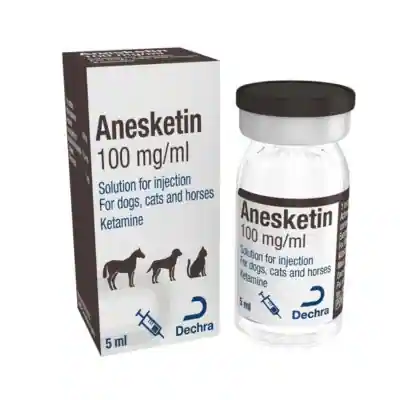
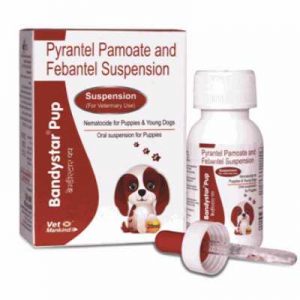
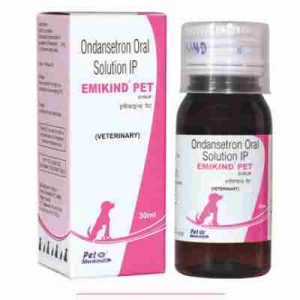
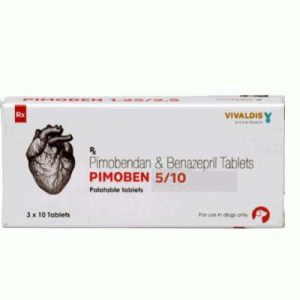
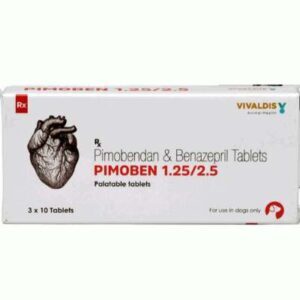
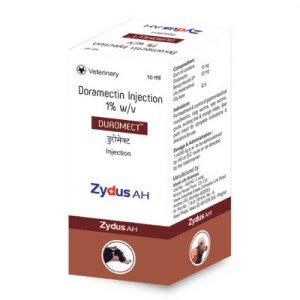
Reviews
There are no reviews yet.